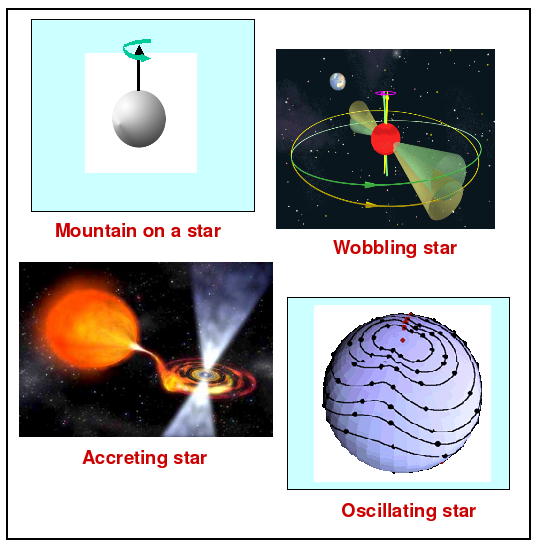
|
Einstein@Home is a method to search for gravitational waves from very dense, rapidly-spinning stars, such as neutron or quark stars [12,13,14]. The frequency of the waves is typically twice the star's spin frequency, though other frequencies are also possible. Thus, if the star is spinning about its axis 100 times per second, we might expect gravitational waves to be emitted primarily at a frequency of 200 cycles per second (Hz).
As indicated in the overview, and for reasons further explained in the next chapter, we will refer to Einstein@Home's target sources as gravitational-wave pulsars, or just pulsars for short, though the possible sources it could detect are more varied. Examples of possible sources are shown in the figure below. Of course, Einstein@Home could also discover something completely unexpected!

|

|
Einstein@Home S3 Analysis Summary |
Last Revised: 2007.03.28 08:59:23 UTC |
Copyright © 2005 Bruce Allen for the LIGO Scientific Collaboration
|
Document version: 1.132 |